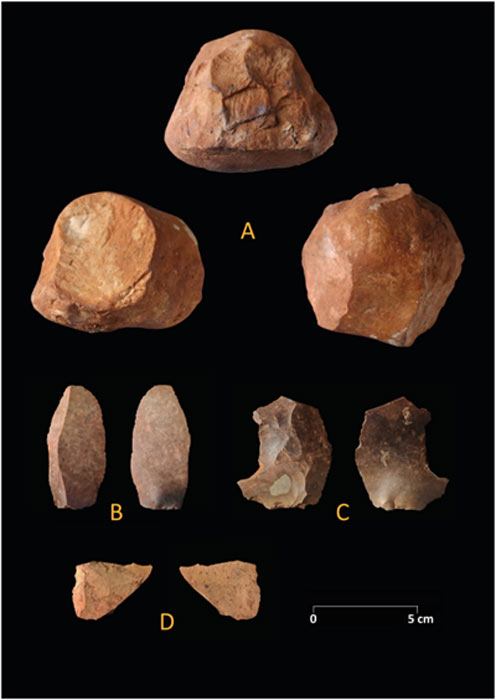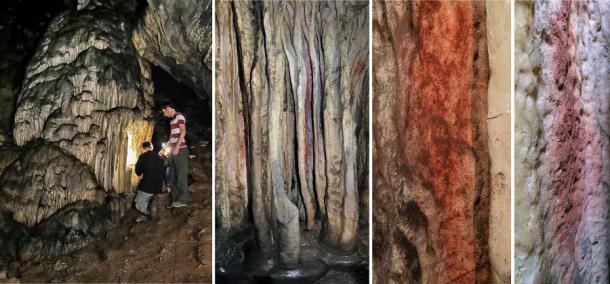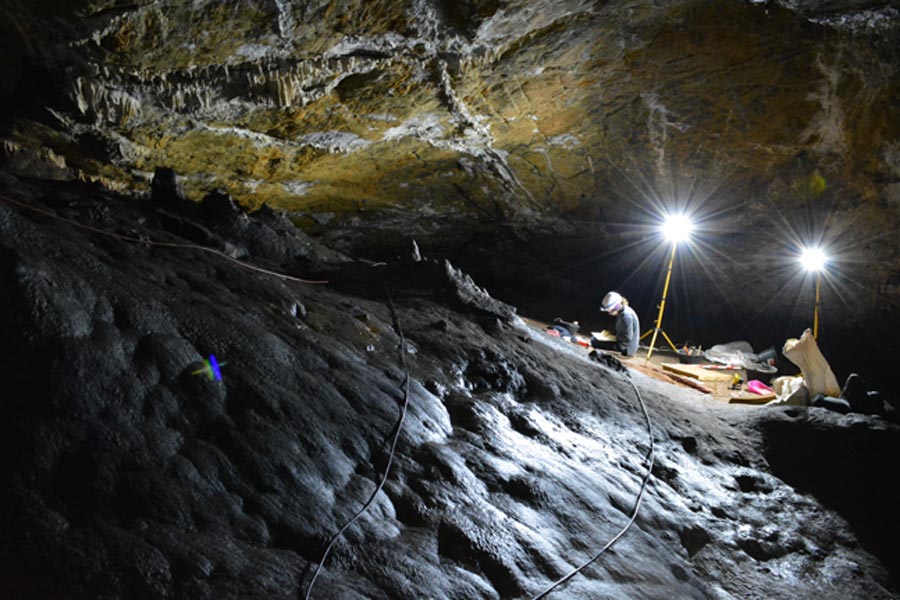The Ice Age Art Gallery Just Got Excavated at Cueva de Ardales
Last year mainstream archaeologists struggled to accept that almost 70,000 years ago someone painted rock art in Cueva de Ardales, a cave in modern day Spain. Now, a team of researchers has shown that ancient cultures revisited the cave for “arts and burials” for over 50,000 years.
In August last year Ancient Origins published a news feature about a team of archaeologists confirming that a series of “painted stalagmites” discovered in Spain’s Cueva de Ardales (Ardales Cave) were executed “by Neanderthals around 64,800 years ago.” Now, new research at the southern Spanish cave has demonstrated how the site was used by ancient humans “as a canvas for artwork and as a burial place for over 50,000 years.”
The Calvary Art Gallery Of Ancient Culture
The new study has been published in the journal PLOS ONE by professor José Ramos-Muñoz of the University of Cadiz, Spain. The scientist describes Cueva de Ardales in Málaga as containing over 1,000 paintings and engravings made by prehistoric people, as well as hundreds of artifacts and human remains. The scientist and his team have now presented the results of the first excavations in the cave which they say “shed light” on the history of human culture in the Iberian Peninsula.
The recent excavations were part of the “Our Way to Europe” project and were funded by the German Research Foundation ( DFG). However, Cueva de Ardales was originally rediscovered in 1821 after an earthquake shifted sediments from its entrance. At 1577 meters (5174 ft) deep, two levels are connected to each other and the first cave paintings were identified in 1918 by H. Breuil and Miguel Such in the so-called “El Calvario” (Calvary) room.
- 76,000-Year-Old Neanderthal Hunting Camp Discovered In Madrid
- The 10 Most Expensive Antiques Ever Sold at Auction

Lithics from the Middle Paleolithic layers of zone 3. A: Quartzite core or heavy-duty tool, B: Blade, C: Levallois flake, D: Sidescraper. (Ramos-Muñoz et al., 2022, PLOS ONE, CC-BY 4.0)
65,000 Years Of Art History At Cueva de Ardales
The researchers say the cave provides an incredible history of human activity in Spain. And when interpreted along with the 30 other painted caves in this region the scientists wrote that they make the Iberian Peninsula “a key locality for investigating the deep history of European culture.” As a whole, the ancient art works at this site are unique because they represent the totality of the Upper Paleolithic chronological range spanning from 65,000 to 8,500 years ago.
The new study presents more than 50 radiometric dates in Cueva de Ardales, confirming the suspected antiquity of the Paleolithic arts, many of which were created “over 58,000 years ago.” Furthermore, the radiometric dating tests confirm the findings of the 2021 research. Neanderthals first occupied the site over 65,000 years ago and used red pigments to create abstract dots, fingertips, and hand-stencils. And the earliest humans arrived at the cave around 35,000 years ago and painted the animals that they hunted.
- Study Confirms Cave Painting Was Made By Neanderthals
- Ten Mysterious Examples of Rock Art from the Ancient World

The stalagmite section in the Ardales Cave in Malaga, Spain that was painted with red ochre, pigment making it probably the oldest Neanderthal painting ever found in a European cave. (University of Barcelona)
The Power Of Prehistoric Faith
The study says numerous fragments of ochre were discovered in the Middle Paleolithic levels (300,000 to 30,000 years ago). This finding suggests the cave was a place of “special activities linked to art” in deep history. Dr. Ramos-Muñoz concludes that the human remains indicate the cave became a burial place back in the early Holocene (beginning 11,650 years ago) but evidence of domestic activities “is extremely poor.”
He says this distinct lack of day-to-day tools and survival devices suggests humans were “not living in the cave”. Therefore, the cave was used solely as a sacred burial site, and this confirms the importance of Cueva de Ardales “as a site of high symbolic value.” What this means is even though the cave offered protection from the harsh environment and its wild animals, the people’s belief that this was a residence of the dead, where the veil between this world and others was thin, overrode their basic survival instincts, and perhaps they dared not live within.
Top image: Excavation area in Cueva de Ardales with evidence from the Middle Paleolithic period. Source: Ramos-Muñoz et al., CC-BY 4.0
By Ashley Cowie




















Comments
But wouldn’t that be like laying a dead body in the Smithsonian? Might funk up the place.
Nobody gets paid to tell the truth.